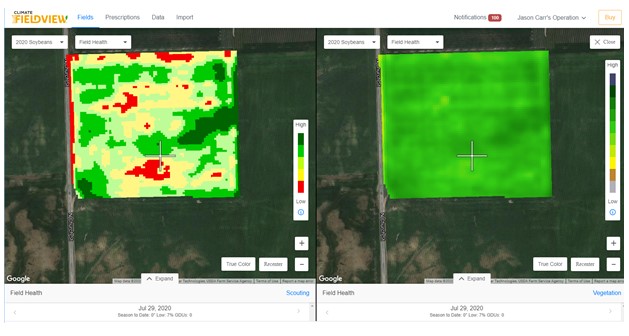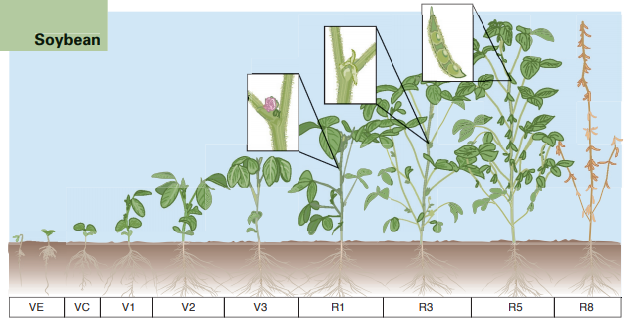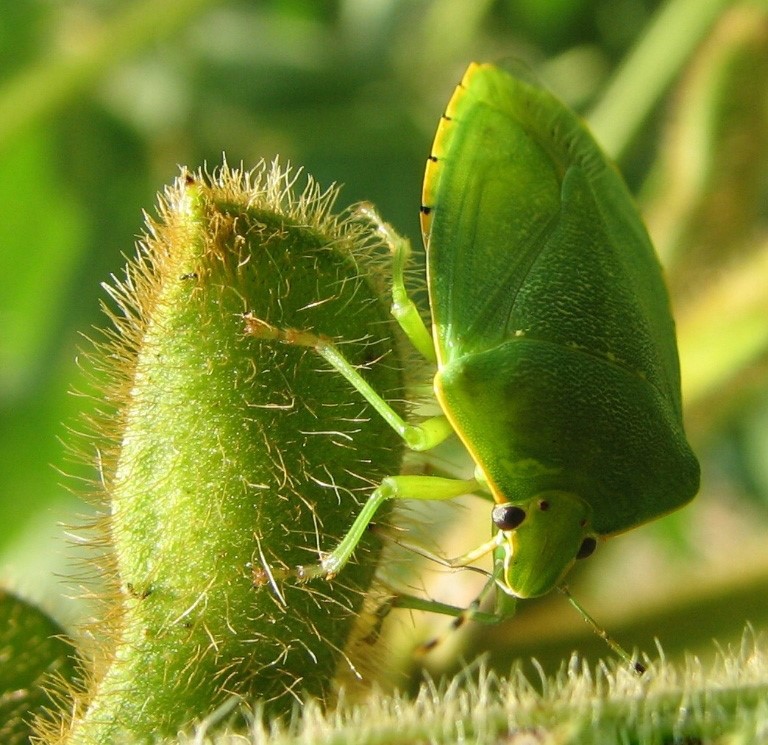In a typical growing season, most of the grower decisions that can affect the final yield of a soybean field have been made. This does not mean, however, that farmers should kick back and relax. Even though it may be more challenging to walk soybean fields in August than in June, there are still benefits to an effective late-season scouting strategy. Here are five tips that can be used to ensure that you collect and utilize information from the field to make wise decisions.
1. Take advantage of in-season imagery.
The majority of growers now use some sort of digital platform to store and analyze field information and yield data. One often under-utilized feature of these platforms is the in-season imagery of fields that is provided. These images can be used to identify potential problem areas to focus on when scouting.

2. Get out of the truck.
This one may seem obvious, but resist the temptation to evaluate from the road. No one enjoys walking through a tangled soybean field late in the summer. However, as useful as digital imagery is, it is no substitute for getting out and evaluating first-hand. Park the truck and put on your boots to get a true sense of what’s going on in the field.
3. Plan walking pattern based on imagery and field regions.
Obviously, the first areas of focus are any regions that show up as potential problems in your digital images. However, as a grower you understand that many micro-environments exist within a given field. Each region has its own specific challenges, so be sure to cover all of these areas to get the best idea of what is going on in the field.
4. Determine growth stage of the field.
Many management decisions depend on the growth stage of the crop, so it is important to properly evaluate the growth stage. This reference guide from the University of Illinois describes soybean growth stages.

5. Evaluate disease and insect pressure.
The best time to apply foliar fungicides to beans is between the R3 and R5 growth stages, as I described in a previous ilsoyadvisor.com post. Most fields are still in this range for at least the first half of the month of August, so diseases identified in a scouting trip may trigger a fungicide application in some cases. If scouting at later growth stages, keep an eye out for pod and stem diseases, such as diaporthe, which could create a need for harvesting as soon as the crop is mature to prevent deterioration of a field that is ready for harvest.
 Insects to be on the lookout for in late summer include aphids and stink bugs. Aphids are small (1/16”) greenish yellow insects that feed on the undersides of leaves and other plant parts. They can cause economic levels of losses in some instances, so follow the guidelines in this factsheet from the University of Illinois to determine whether or not insecticide application is advised.
Insects to be on the lookout for in late summer include aphids and stink bugs. Aphids are small (1/16”) greenish yellow insects that feed on the undersides of leaves and other plant parts. They can cause economic levels of losses in some instances, so follow the guidelines in this factsheet from the University of Illinois to determine whether or not insecticide application is advised.
Stinkbugs are problematic due to their propensity to feed on pods. Reports of yield losses of up to 30% have been reported from this insect. The threshold for treatment is fairly low, with two bugs per foot of row warranting an insecticide application. Even if direct yield loss is not sustained from the damage, seed diseases can set in which can reduce both yield quality and quantity.
 Other insects that may be present include bean leaf beetles, but these rarely cause economic levels of yield loss. If any insect is present in high enough populations to trigger treatment, insecticide applications are generally both inexpensive and effective.
Other insects that may be present include bean leaf beetles, but these rarely cause economic levels of yield loss. If any insect is present in high enough populations to trigger treatment, insecticide applications are generally both inexpensive and effective.
Late summer and pre-harvest scouting are critical activities that ensure that growers capture the yield potential that has been created by their early and mid-season management decisions. Don’t leave bushels in the field because of a hesitancy to get out and walk later in the year.




 and then
and then